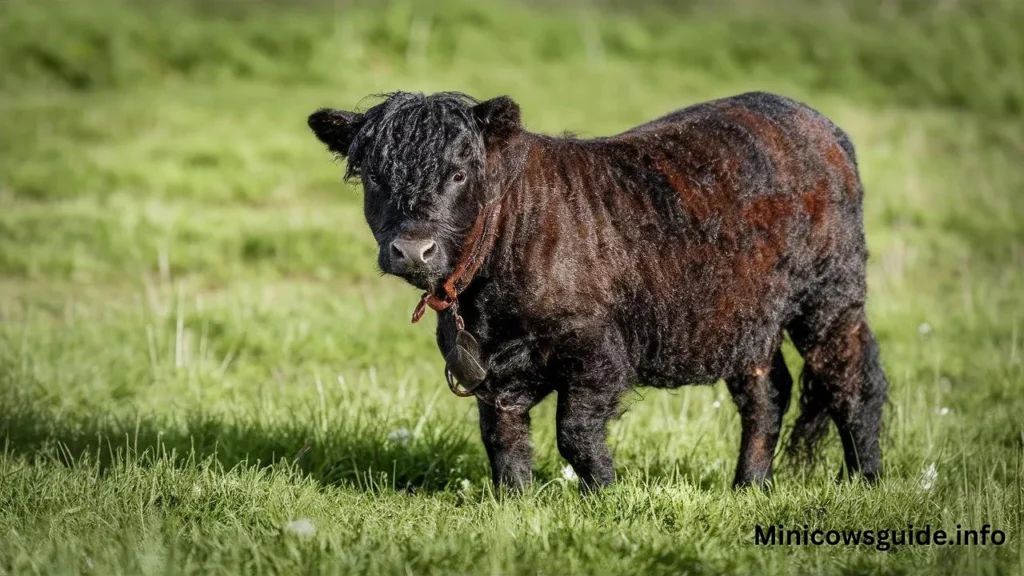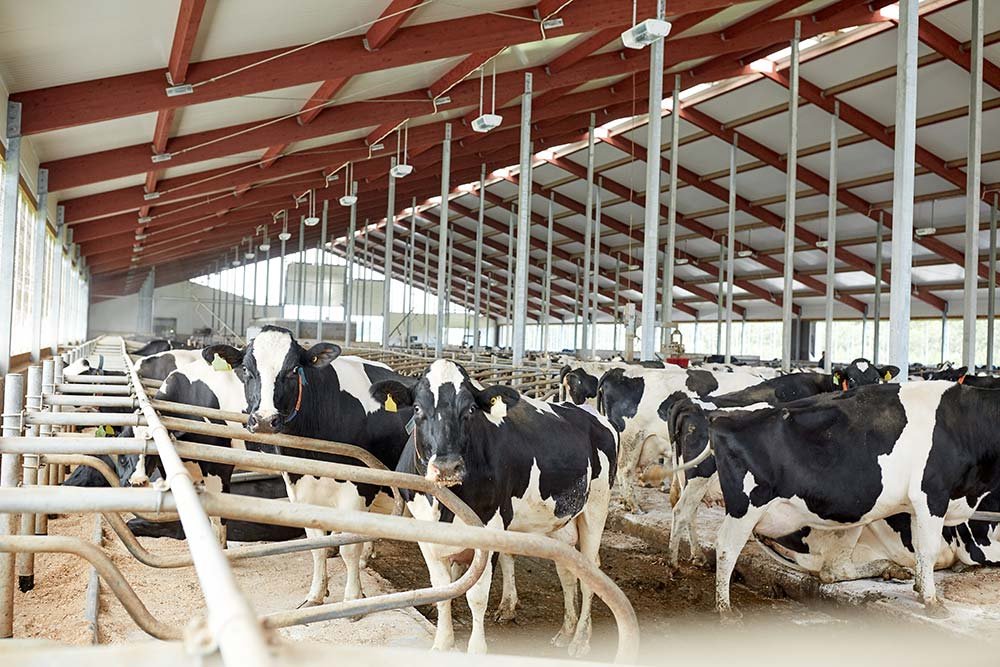The world of mini cows is a captivating one, offering all the charm and gentle nature of their larger counterparts in a more manageable size. The Belted Galloway, commonly referred to as the Mini Beltie, is a small marvel that is distinguished by its distinctive belted coat and amiable nature. This blog explores the intriguing world of the Mini Beltie, including its history, traits, maintenance needs, and fit for your tiny farmyard fantasies.

A Scottish Legacy in Miniature: The Belted Galloway’s Origins
The Belted Galloway’s history started in the Galloway region of southwest Scotland, where the cattle have been roaming for more than 300 years. These cattle, which were well-known for their resilience and flexibility, fared well in the harsh climate of the area. The iconic belted pattern, a broad white band encircling their midsection, is a unique feature of the breed.

The development of the Mini Beltie is a relatively recent phenomenon. To produce a smaller variant, American and Australian breeders started carefully breeding Belted Galloways in the 1980s. The cute Mini Beltie, who offers a smaller size while maintaining the essence of the Belted Galloway, is the product of this process, which involved careful selection and regulated breeding.
A Charming Package: The Mini Beltie’s Characteristics
While miniaturized, the Mini Beltie embodies the spirit of the Belted Galloway, boasting several distinctive characteristics:
Size:
Standing at a mature height of 36-42 inches at the shoulder and weighing between 350-600 kilograms, the Mini Beltie is significantly smaller than its full-sized counterpart. This compact size makes them ideal for smaller farms and hobbyists with limited space.
Coat:
The double coat of the Mini Beltie is a marvel in itself. The outer coat is long and coarse, providing excellent insulation against harsh weather conditions. The undercoat is soft and dense, offering additional warmth during colder months. The iconic belted pattern remains a prominent feature, adding to their unique charm. Color variations can include black, dun, and red, with the distinctive white belt.
Temperament:
Mini Belties are known for their docile and friendly nature. They are calm and easy to handle, making them suitable for families with children and first-time livestock owners. Their gentle nature also allows them to coexist peacefully with other farm animals.
Milk Production:
While some miniature cattle breeds are known for milk production, the Mini Beltie is not primarily bred for this purpose. Their milk yield is generally low and not sufficient for commercial dairy production. However, some owners may choose to hand-milk their Mini Belties for personal use.
Long life:
Mini Belties are known for their long lifespan, often living up to 17-20 years. This makes them a long-term commitment for potential owners, but also ensures years of enjoyment and companionship.
Hardiness:
Like their larger ancestors, Mini Belties are a hardy breed that can adapt to various climates. Their thick coat and strong immune system make them resistant to many common diseases, reducing the need for extensive medical intervention.
How to take care of your Mini Beltie
Owning a Mini Beltie comes with the responsibility of providing proper care. Here are some key aspects to consider:

Diet:
Mini Belties are grazers by nature and thrive on a diet of high-quality hay, supplemented with fresh water and minerals. Depending on the quality of your pasture, additional grain or concentrate may be necessary to meet their nutritional needs. Consulting with a veterinarian or experienced breeder can help tailor a specific diet for your Mini Beltie.
Shelter:
While their thick coat provides good insulation, Mini Belties still require shelter from extreme weather conditions. A three-sided shed with a deep bed of straw or hay allows them to escape the elements and stay comfortable.
Fencing:
As with any livestock, ensuring proper fencing is crucial for the safety of your Mini Beltie and your property. Sturdy electric fencing or post and rail fencing are recommended to contain these curious creatures.
Veterinary Care:
Regular veterinary checkups are essential for maintaining your Mini Beltie’s health. These visits allow early detection and treatment of any potential health issues. Additionally, vaccinations and parasite control are essential components of responsible animal ownership.
Bringing Home a Mini Beltie: Are They Right for You?
Before welcoming a Mini Beltie into your life, it’s crucial to consider your lifestyle and capabilities. Owning any livestock, even miniature breeds, comes with responsibilities and commitments. Here are some factors to ponder:
Space:
While smaller than their full-sized counterparts, Mini Belties still require adequate space to graze, exercise, and socialize. Ensure you have sufficient pasture land.
Mini But Mighty: Distinguishing the Mini Beltie from Other Miniature Breeds
When considering miniature cattle breeds, it’s important to understand how the Mini Beltie differs from others. Here’s a brief comparison:
Dexter Cattle:
Dexters are one of the smallest miniature cattle breeds, typically reaching a height of 34-42 inches (86-107 cm) at the hip. They share a similar gentle temperament with Mini Belties but often have a solid black coat and may have horns.
Highland Cattle:
These miniature versions of the iconic Scottish Highland cattle are known for their long horns and hairy coats. While they share the hardy nature of Mini Belties, they are generally larger, reaching up to 48-54 inches (122-137 cm) at the hip.
Jersey Miniatures:
These miniature versions of the Jersey breed are known for their high milk production compared to other miniature breeds. However, they are still considered smaller than standard-sized Jerseys and typically.
Conclusion
Mini Belties, with their adorable looks and friendly personalities, can be the perfect addition to your miniature farmyard. This guide has explored everything you need to know, from their Scottish heritage to their care needs. If you have the space and commitment for a long-term furry friend, a Mini Beltie could bring years of joy and a unique touch to your miniaturized world.






